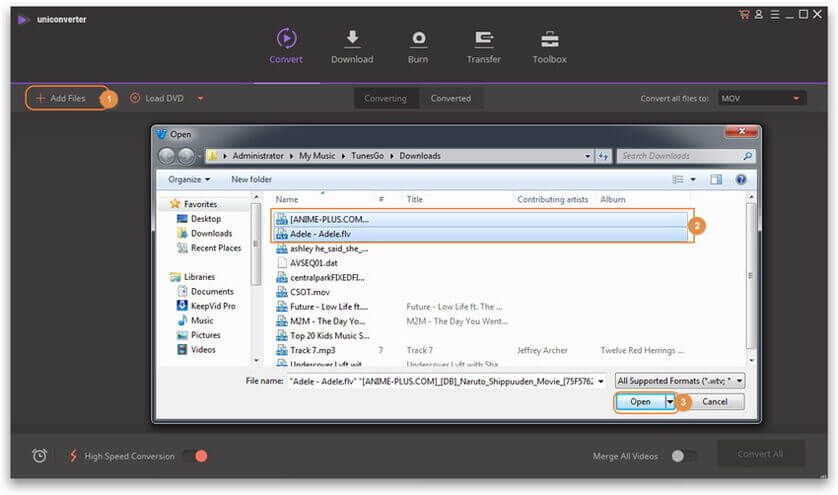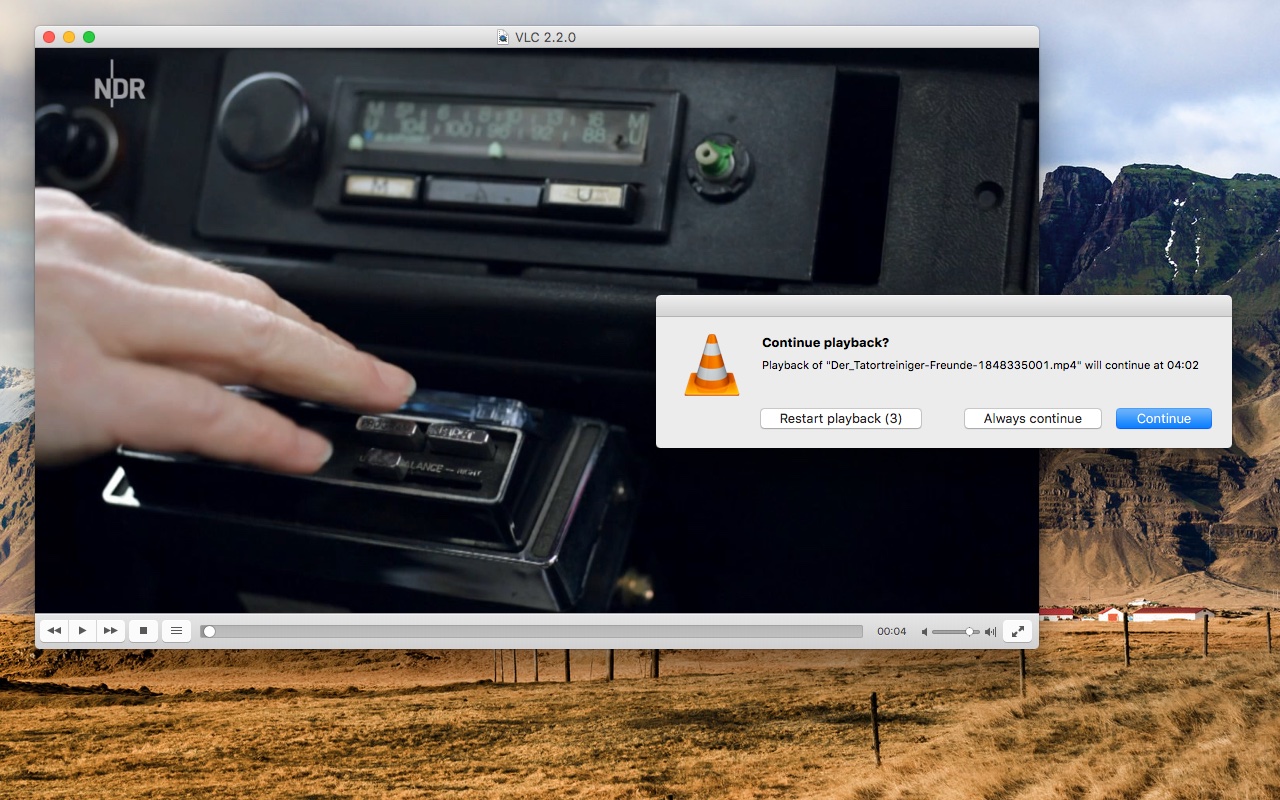VLC Media Player (formerly VideoLAN Client) is a highly portable for various audio and video formats, including MPEG-1, MPEG-2, MPEG-4, DivX, MP3, and OGG, as well as for DVDs, VCDs, and various streaming protocols. It also can be used as a server for unicast or multicast streams in IPv4 or IPv6 on a high-bandwidth network.
With a new audio core, hardware decoding and encoding, port to mobile platforms, preparation for Ultra-HD video and a special care to support more formats, 2.1 is a major upgrade for VLC 2019 latest. Rincewind has a new rendering pipeline for audio, with better effiency, volume and device management, to improve VLC audio support. It supports many new devices inputs, formats, metadata and improves most of the current ones, preparing for the next-gen codecs.
VLC Media Player Features:. 8K support (hardware decoding is on by default). Chromecast/Google Cast support. HDR and 10 bit video. HMDI Audio passthrough. Network browsing for NAS systems. 360 video and 3D audio.
Modifying subtitle size live. Drag and drop support. HD DVD support.
Rewritten video output core and modules, allowing blending in GPU. Shader support in the OpenGL output, for conversion, including 10bits. Video outputs for Windows 8 and 7, Android, iOS and OS/2. Debanding, grain, denoising and anti-flickering filters. Deinterlacing filter, including an Inverse Telecine algorithm.
Resamplers for higher quality audio. Dynamic range compressor and karaoke filters. Simplification of the audio core for faster processing. Audio outputs for iOS, Android and OS/2. Multi-threaded decoding for H.264, MPEG-4/Xvid and WebM.
Support for 10bits codecs, WMV image and some other codecs. Rewritten support for images, including jpeg, png, xcf, bmp etc. Important changes in RealVideo and Real Format support. CrystalHD cards and Android OpenMAX support for hardware decoding.
And many more features. Also Available.

The VideoLAN organization released the final version of VLC 3.0 Vetinari today. Moving from version 2.x.x to 3 is a major upgrade to this popular media player. Today (Feb 9, 2018) marks the day when the much-awaited VLC Media Player upgrade is released for all major platforms (desktop as well as mobile)—Windows, Windows Store, OS X (Mac), Google Play, iOS, Linux and Windows Phone. It also supports other operating systems and devices like Apple TV, Chrome OS and XBox One. You can get your copy of this free and amazing media playing software for free.
To download the latest version, go to: and you can click on the Download VLC button to get your copy for your current platform. You will also find the. You can also. What’s New in VLC 3.0.0? If you’ve been wondering what’s new in this fresh release of VLC Media Player, then the list is long. Here are some of the highlights of what’s new: Major Platforms: In continuing the tradition of being a universal media player, VLC has added support to all the major platforms today.
Whether it is your mobile device or your desktop/laptop, no matter what the OS it uses, VLC is there for you. You can use it in Windows as a 32-bit software and find it as an application on the Windows Store. It is available for your Windows Phone as well. For Apple users, it’s readily available for Mac OS X (for macbooks), iOS (for iPhones) and Apple TV. Linux users will find it in their repository whether they use Debian GNU/Linux, Ubuntu, Mint, openSUSE, Gentoo Linux, Fedora, Arch Linux, Slackware Linux, ALT Linux or Red Hat Enterprise Linux. It is also available on Android. It’s also there for the XBOX One.
Other systems like Chrome OS, FreeBSD, NetBSD, Open BSD, Solaris, QNX, Syllable and OS/2 are also supported. Hardware Decoding: Uses your powerful hardware to decode media files and due to this, it can easily get 4K and 8K media playback. Supports 10 Bits and HDR: Your 10 BIT UHD, 4K HDR and 8K videos are easily supported and your GPU does all the work for it. 360 Video: 360 Videos have been around for some time and now you can play such videos in VLC. You can also open 360 pictures if you take those from your phone. 3D Audio: Yes, you get 3D audio effects and ambisonics 3rd order. Audio Passthrough: Readily available for HD audio codecs.
Chromecast Support: You can stream your videos from your phone to your big screen using VLC. Chromecast support means that now you can even stream unsupported media files by Google Chromecast to your big screen. It’s convenient now and you can give it a try to other streamers on the market as well. Blu-Ray Java menus: Blu-Ray disks burned with such menus will now show in our favorite media player.
Local Network: Browse files from the local network for playing. Distant File Systems(SMB, FTP, SFTP, NFS): Access remote networks supported by this player to play the files stored in such systems.
HDMI Passthrough: No more HDMI Splitters and multiple HDMI cables needed because of this feature. Of course, these are just the highlights of what the upgrade offers. Has all the details for the tech-savvy users.
For the rest of us, all that we have to know is that it is available everywhere and supports every format. So, get to installing VLC on all your devices and level up your media playing experience.
The Interface Downloading a copy on our Windows machine, we can tell that the interface remains the same. You will find the same cone icon and when you launch it, the app has the same friendly look. The menus and options are all in place and it might not smell new to the daily user.
But know that, there is a lot of work that has been done in the background which will ensure that our media playing experience stays smooth over the years to come. So, what are you waiting for? Hello everyone, I need some help, hope you can help me here. I got a problem in version 3.0.1 that was not there in 2.2.6. In Windows Explorer I like to group my files and folders by “group” like on this screenshot: In 2.2.6 I was used to the video files being grouped by extension seperately. For example, if i had 5.avi files and 11.mp4 files, it said: VLC media file (.avi) (5) VLC media file (.mp4) (11) That is just like i want it to be.
But now in version 3.0.1 it is looking like this: VLC media file (16) without seperating the extensions in several groups. All VLC associated file extensions get grouped under one group. That’s not what i want. I also don’t want to group by “file extension” because it’s not the same at all, you can try it.
Folders get grouped at the bottom and other stuff i dont want. Hope you can help.
Is there an option to reverse it? Otherwise i need to stay with version 2.2.6. Thanks in advance. Sorry for the late answer, yes I can reverse with everything under version 3 it seems. I downloaded 2.2.8 and staying with it right now. It doesn’t look like a problem caused by Windows, but who really knows?

Vlc 0.9.10 For Mac
I found a thread in a german VLC forum where someone didn’t like this change, but did not get a solution to fix this too. Not sure if this was intentionally done by the developers or not.
Should I contact the developers somehow and ask for a solution or ask to put in an option, like a checkbox to change this if it’s possible? I guess this here is not an official site and you don’t have a direct connection to the developers? Initially I updated to version 3 because of the chromecast feature, but it didn’t work for me. The videos I wanted to stream, loaded forever, no matter what codec and format I tried. Seems I stay at 2.2.8, but maybe you find a solution, which would be great.
Maybe there is even an option in the settings, but i couldn’t find it and the expert view has so many options, I get lost, so I don’t know where to search for.